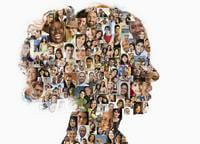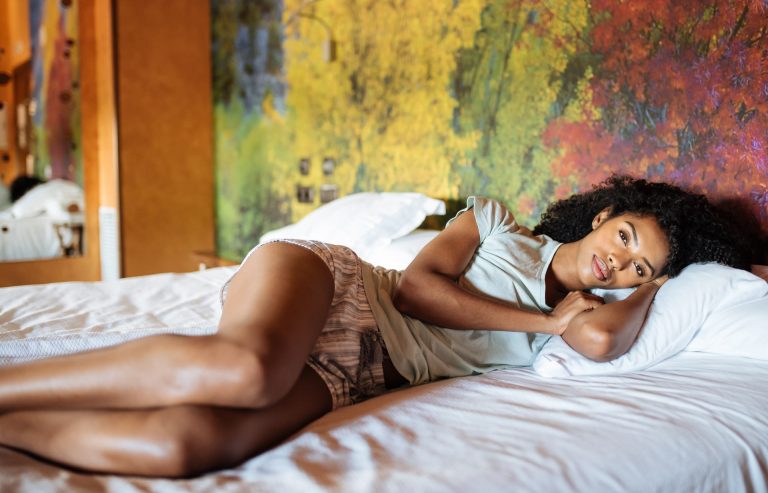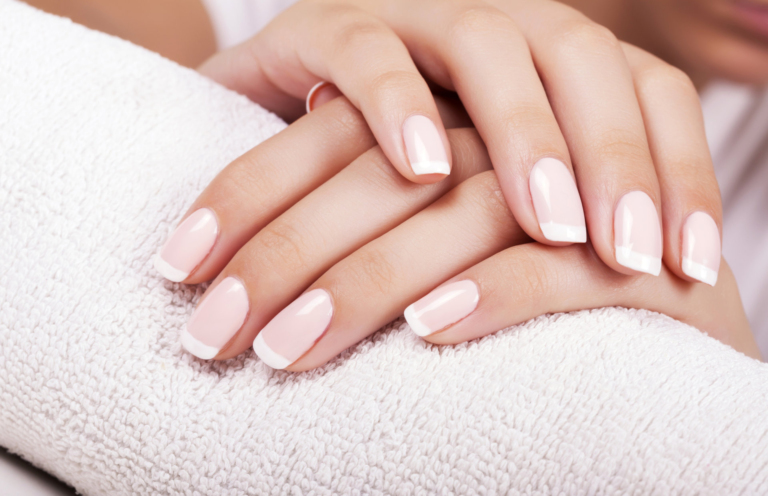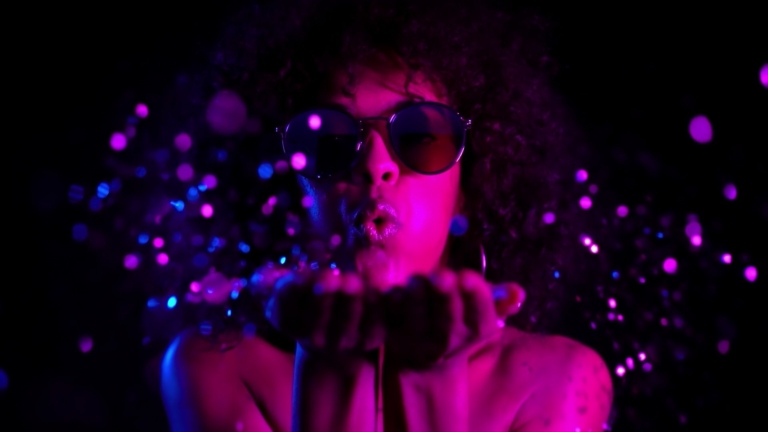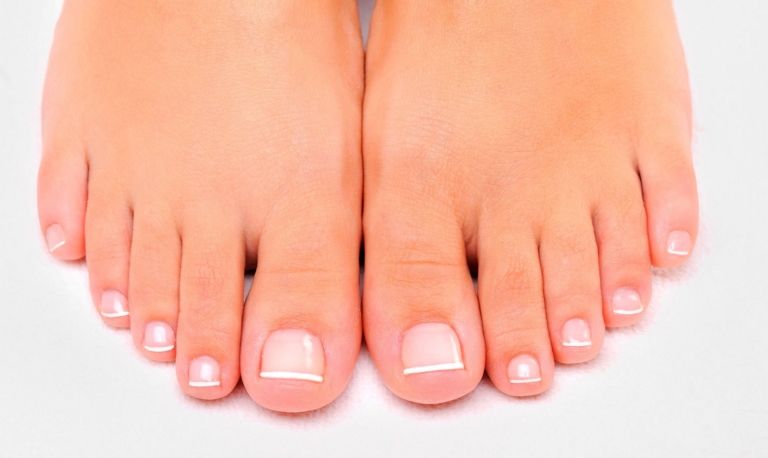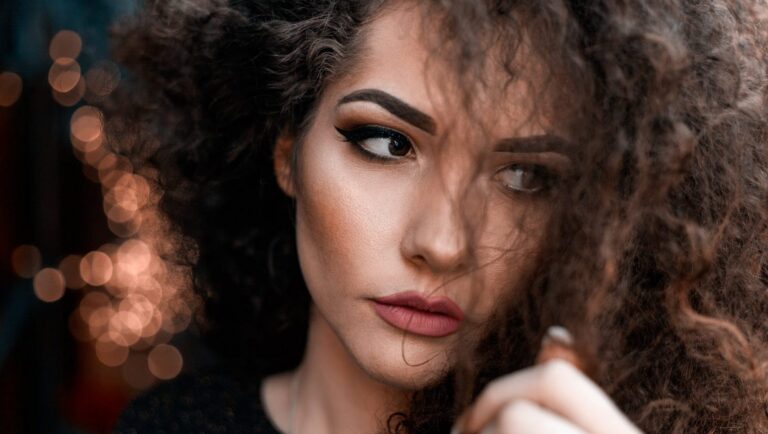Acne in adults: Symptoms Treatment Diagnosis
Acne is a chronic skin disorder affecting 60-80% of the population.
Skin changes in the form of seborrhea, blackheads, papules and pustules are most often localized on the face, back and chest.
When we say acne, we think juvenile acne!
We’re used to blackheads and purulent eruptions being the scourge of adolescence.
Dermatologists, however, are under no illusions.
Acne is no longer the preserve of teenagers, and now affects more than 50% of people over the age of 25.
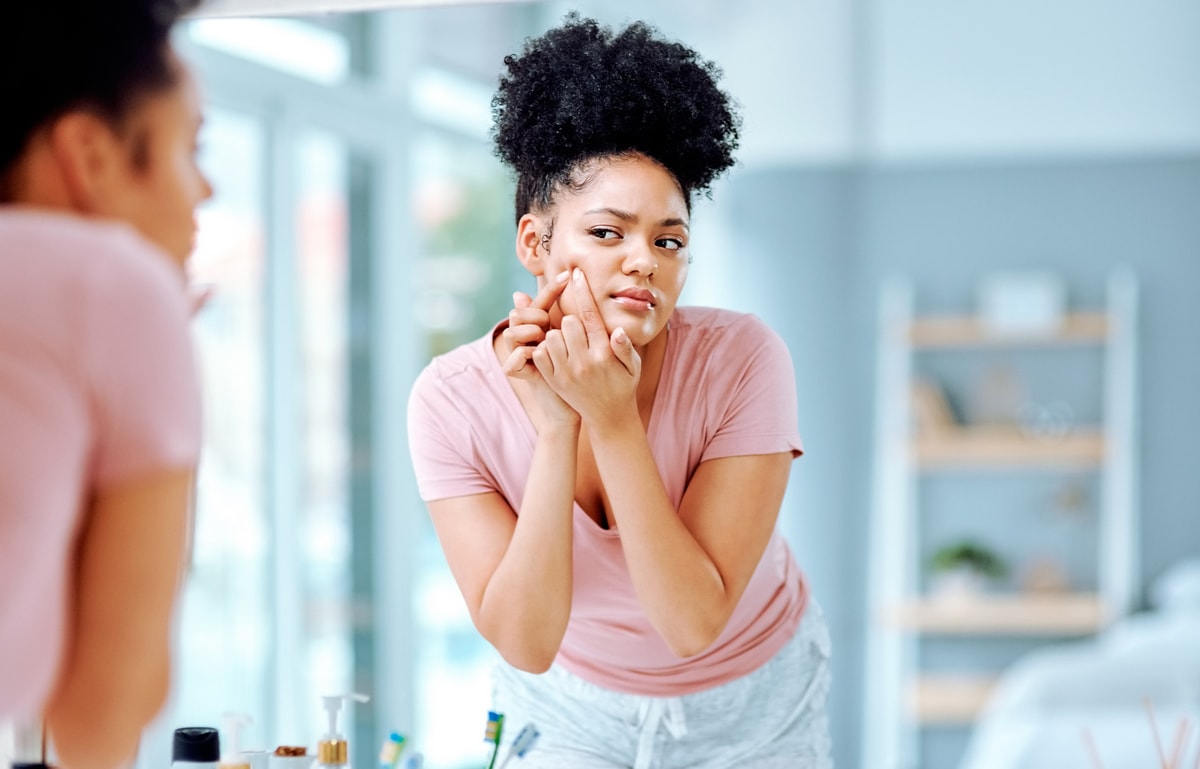
Causes of acne formation
It all starts with an increase in the production of sebaceous gland secretions and simultaneous keratinization of the epidermis.
In such a situation, the sebum produced in large quantities cannot escape freely from the skin’s surface, and clogs the outlets of the ducts leading to the sebaceous glands.
In this way, the secretion is trapped in the epidermis, creating first microcracks, then closed blackheads.
They provide an ideal environment for the activity of anaerobic bacteria which, under the influence of enzymes, break down the components of sebum into fatty acids, which in turn irritate surrounding tissues, triggering the formation of inflammatory conditions.
At the same time as the anaerobes, other micro-organisms may begin to act, such as yeasts, which further intensify the inflammatory reactions.
Pimples and papules begin to form on the skin, which, if left untreated, develop into nodules and infiltrations, and in advanced stages, into purulent cysts.
Even after healing, these leave scars on the face.
The factors that cause excessive sebum production and contribute to the formation of acne are as follows:
- Hormonal imbalance
- Genetic factors
- Stress produces cortisol
- An unhealthy diet
- Inadequate or non-existent skin care
- Taking certain medications, including antidepressants and corticosteroids
Excessive sunbathing: although sun exposure temporarily improves skin tone, reduces inflammation and minimizes the appearance of pimples in the long term, it exacerbates the problems.
Also read: how to choose a (safe) sun cream?
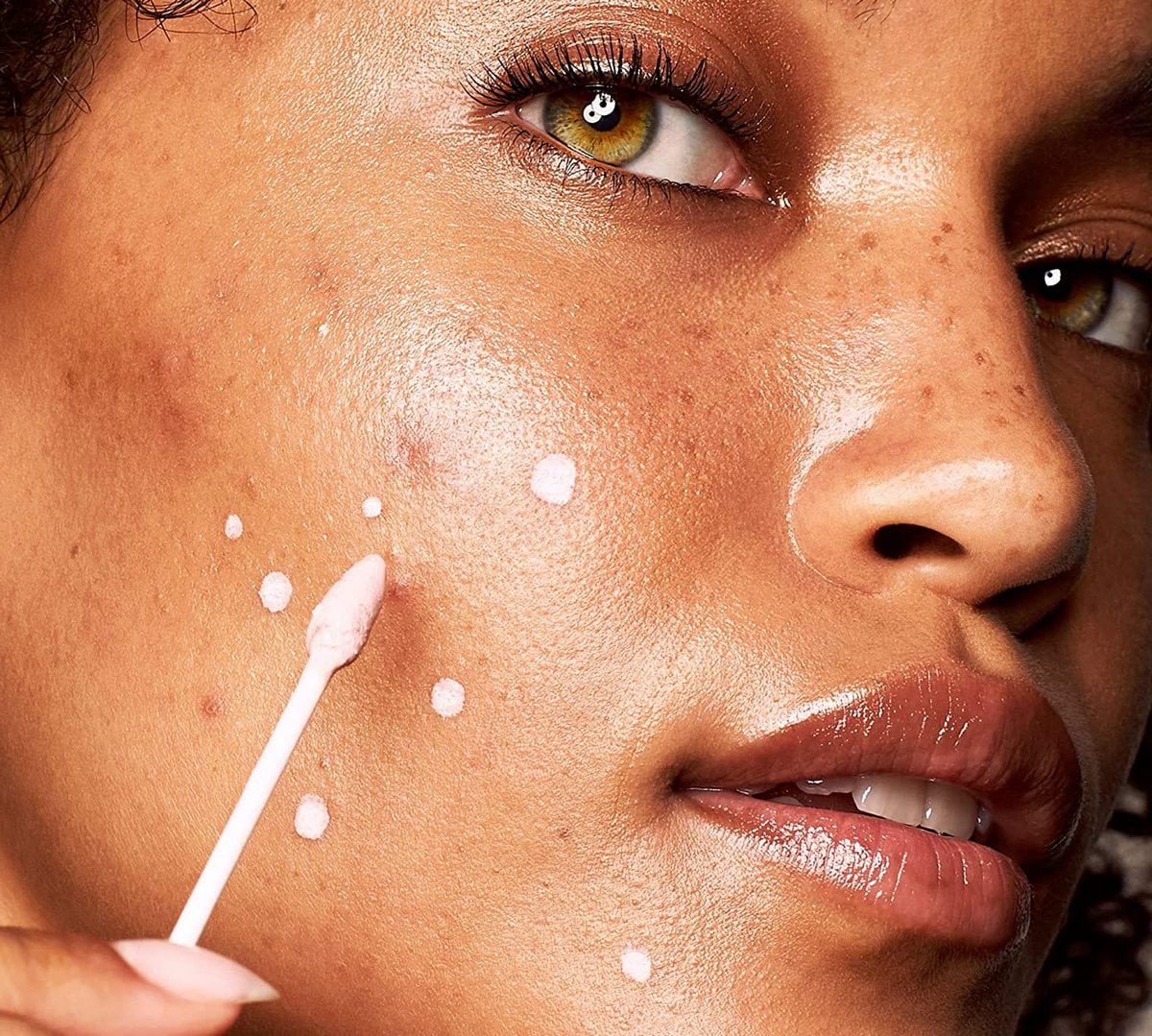
Acne symptoms
The cutaneous symptoms of acne can be:
- Blackheads, This is generally the first type of pimple to appear.
They take the form of black or yellow spots, usually found on the nose and cheeks.
They are caused by a secretion from the sebaceous glands trapped under the skin. - Papules are raised red lesions on the skin.
- Pustules, are infected blackheads.
The pimple is convex, with a white spot in the center (pus), and the surrounding skin is very red. - Nodules are large, convex, bright red in color, with a large quantity of pus visible in the center.
They are rooted in the deep layers of the skin.
Symptoms may vary in intensity and be of a mixed nature. The resulting skin lesions should not be touched, punctured or pressed, as this can lead to inflammation and the development of further lesions.
Types of acne
Depending on the nature of the skin lesions, their cause and the time of their formation, there are different types of acne:
- Rosacea
- Juvenile/commune acne: papular and comedonal
- Hormonal acne
- Cystic acne
- Children’s acne
- Post-steroidal acne
- Self-inflicted acne
- Professional acne
Acne rosacea
Rosacea is a dermatosis characterized by redness of the central part of the face and papular and pustular eruptions.
It affects adults, generally women over the age of 30.
The causes of rosacea are linked to excessive seborrhea, vasomotor and endocrine disorders.
See also: natural curly hair mask
Acne is exacerbated by the consumption of hot and cold foods, coffee and tea, chocolate and alcohol.
High and low temperatures, the sun and stress are also irritants.
Treatment of rosacea is long and difficult.
Antibiotics, retinoids and vascular sealants are used, Sollux lamp irradiation with a blue filter and laser therapy.
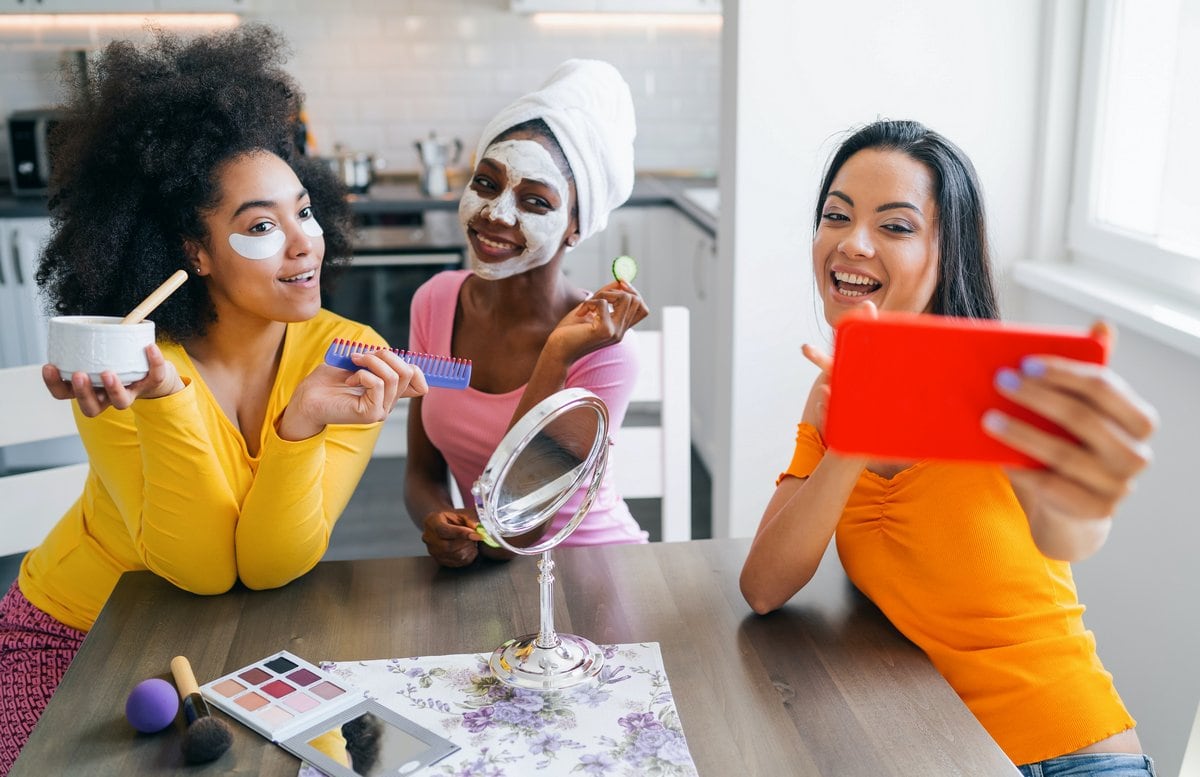
Juvenile acne
Acne vulgaris is the most common form of acne.
It can affect people of any age, although it most often appears in adolescence.
The cause of this type of acne is a genetic predisposition to increased sebum secretion and hyperkeratosis of the hair follicle orifices, as well as liver and gastrointestinal disorders.
The triggering factor is the hormonal storm, in particular the increase in androgen activity. The bacterium Propionibacterium acnes is implicated in the pathogenesis of juvenile acne.
Teenage acne manifests itself as pustules, papules and blackheads on the face, back, shoulders and sternal area.
Hormonal acne can also occur in adults, particularly women, due to fluctuating hormone levels.
It most often appears before menstruation, during pregnancy and during the menopause.
Varieties of acne vulgaris include:
- Pustular acne Redness or appearance of hard, painful pustules and nodules on the skin.
- Acne pilaris, in which pus cysts are also found.
- Cluster acne, characterized by deep infiltrations and fused purulent cysts, leaving scars. Lesions appear most often in men and are localized on the face and in the axillary, inguinal and buttock areas.
- Scarring acne, in which there is a tendency for scars to form, particularly in the case of pus-filled acne.
Medications for the treatment of acne vulgaris include retinoids, hormonal and antibacterial drugs, benzoyl peroxide and the antibiotics erythromycin, clindamycin and macrolides.
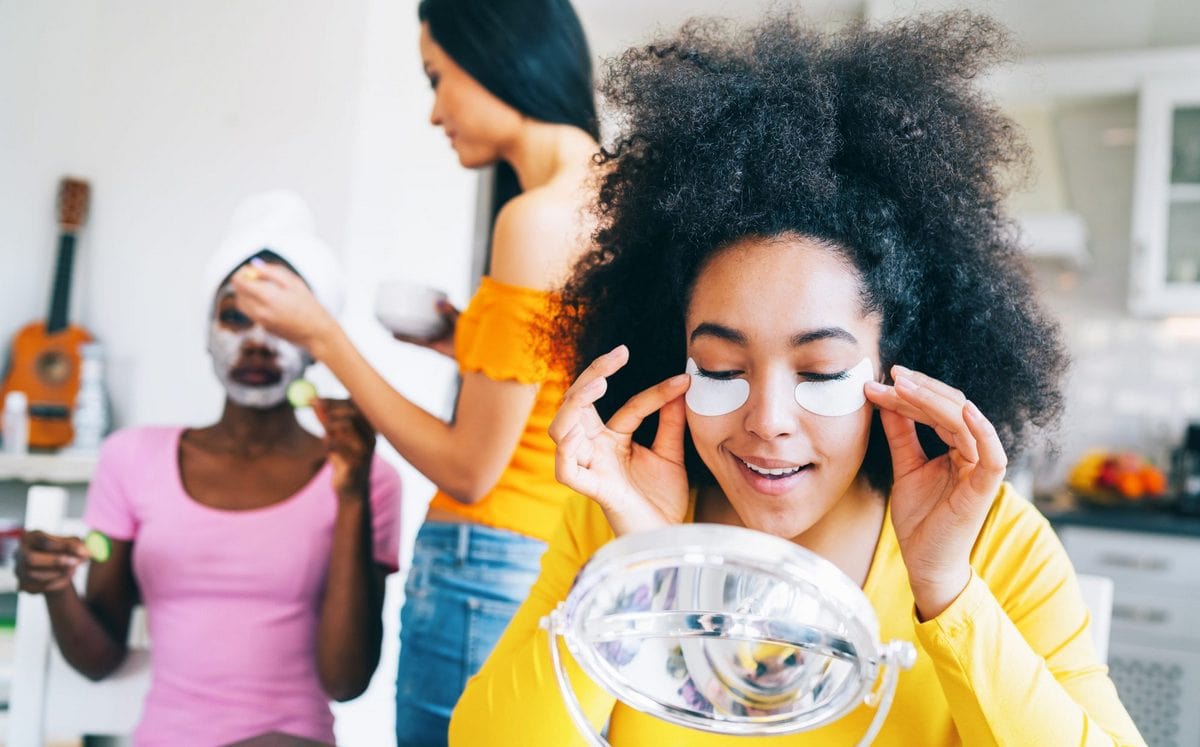
Neonatal and infantile acne
This type of acne can affect up to 20% of newborns.
Blackheads, papular and subcutaneous eruptions and nodules appear on the child’s face.
The probable cause of acne is the passage of maternal hormones to the fetus.
Sometimes, childhood acne can be the result of long-term use of mineral oils on the baby’s skin.
If your baby is showing worrying symptoms, you should see a doctor urgently to assess the skin changes.
In most cases, neonatal and infantile acne disappear spontaneously within 1 to 3 months.
Other types of acne
Acne can be caused by external factors, which can be cured by recognizing and eliminating them.
The following forms of acne can be distinguished:
Post-steroid acne, skin lesions in the form of large papules and infiltrates appear following long-term use of medications containing bromine, barbiturate iodine and steroid hormones from the adrenal cortex.
Self-inflicted acne occurs when skin lesions are compressed or scratched.
It leads to inflammation, erosion and ulceration.
It can cause scarring, hyperpigmentation and discoloration.
Professional acne takes the form of blackheads, pustules and papules on the forearms and genital area.
It develops as a result of constant contact with oils, fats or tars.
It also appears in people who work in smoky, dusty areas.
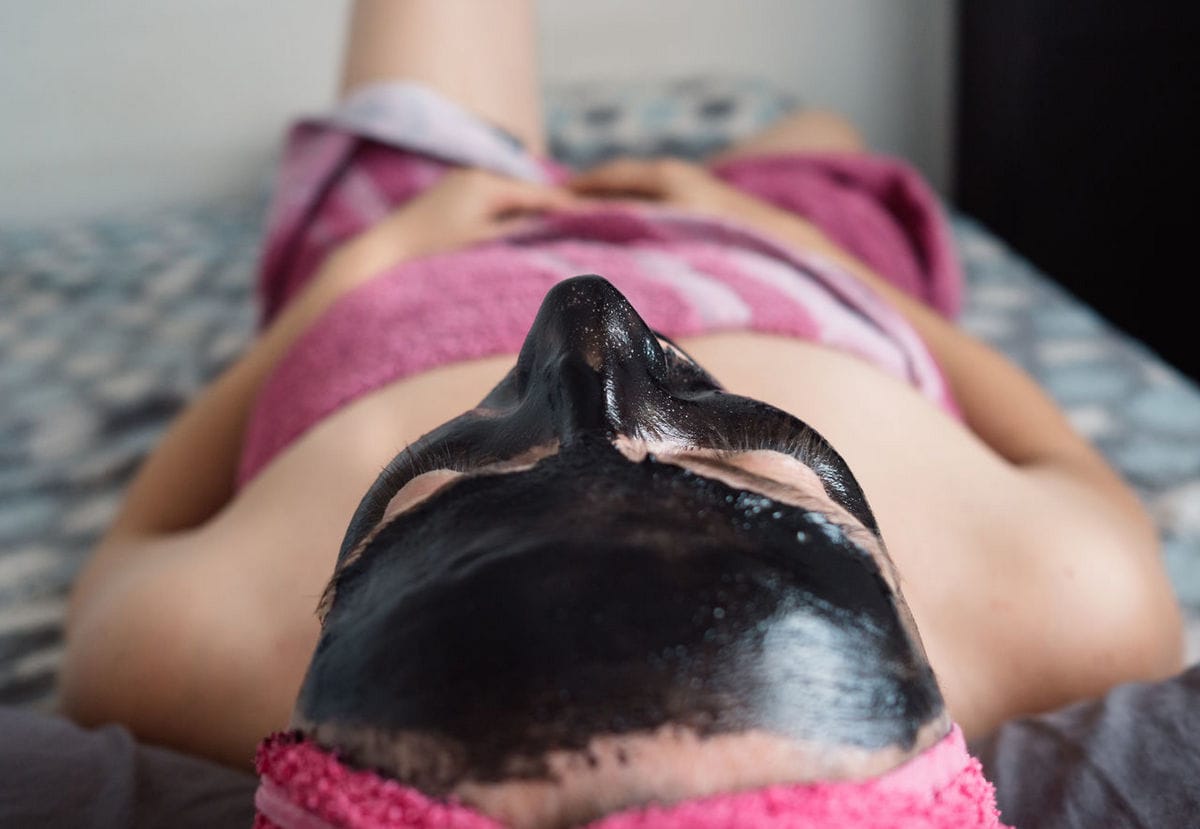
How to get rid of acne?
Acne needs to be treated causally, and sometimes one treatment doesn’t work and a combination of treatments is needed.
Acne treatment is based on drug therapy, appropriate skin care and a shift to a healthier lifestyle.
If acne is mildly progressive and lesions are not intensely aggravated, topical treatment is generally sufficient.
Acne ointments contain an antibiotic (usually clindamycin, erythromycin or tetracycline), auxiliary substances that reduce inflammation (benzoyl peroxide, zinc, azelaic acid) and vitamins A and E.
See also: Botox hair treatment
In more severe cases, the simultaneous use of ointments and oral medication is recommended.
Acne tablets contain the same antibiotics, but have a general effect on the whole body.
The aim of topical antibiotics is to combat anaerobic bacteria.
Treatment with an oral retinoid, isotretinoin, gives very good results, even in cases of severe acne symptoms.
Following its use, epidermal cells are intensely exfoliated, and sebum accumulation in hair follicles is reduced, giving the treatment an 80-90% efficacy rate.
Despite its spectacular results, retinoid treatment is not easy. It must be systematic, last several months and be carried out under the supervision of a physician.
The prescription of the drug must be preceded by examinations, including cholesterol tests, as its high concentration is an absolute contraindication.
When using isotretinoin, contraception is required (for both women and men), as the drug has teratogenic effects (harming the foetus).
Due to the intensive exfoliation of the epidermis, a side effect of the treatment is severe dryness of the skin (and not only in areas where acne is present).
During treatment, you should also avoid sunbathing or using aesthetic medicine procedures.
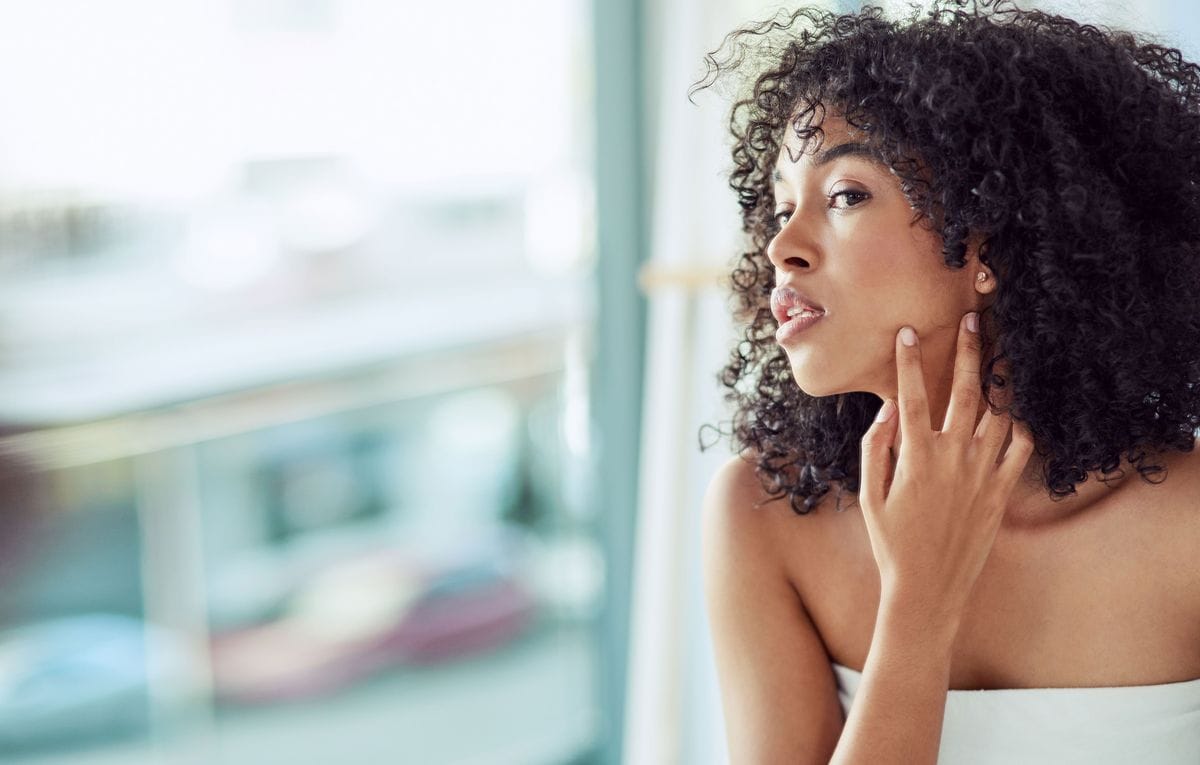
Home remedies for acne
Because acne is a disease, it unfortunately can’t be cured with home remedies.
However, this doesn’t mean that home remedies are useless – quite the contrary.
Good acne skin care accelerates healing and nourishes the skin.
A balanced diet rich in minerals and vitamins prevents the effects of deficiencies, and knowing which products can exacerbate acne means you can consciously eliminate them.
How do I get rid of a pimple fast?
Ichthammol ointment helps to heal pimples and boils, as it has bacteriostatic and astringent properties.
On the other hand, zinc ointment soothes skin inflammation.
For acne scars, we can use preparations based on allantoin, heparin, onion extract and mother-of-pearl.
We can remove acne discolorations using chemical peels, laser therapy or cryotherapy.
You can also use creams containing lightening substances such as vitamin C or arbutin.
Creams containing green tea, bisabobol or horse chestnut extracts are also useful.
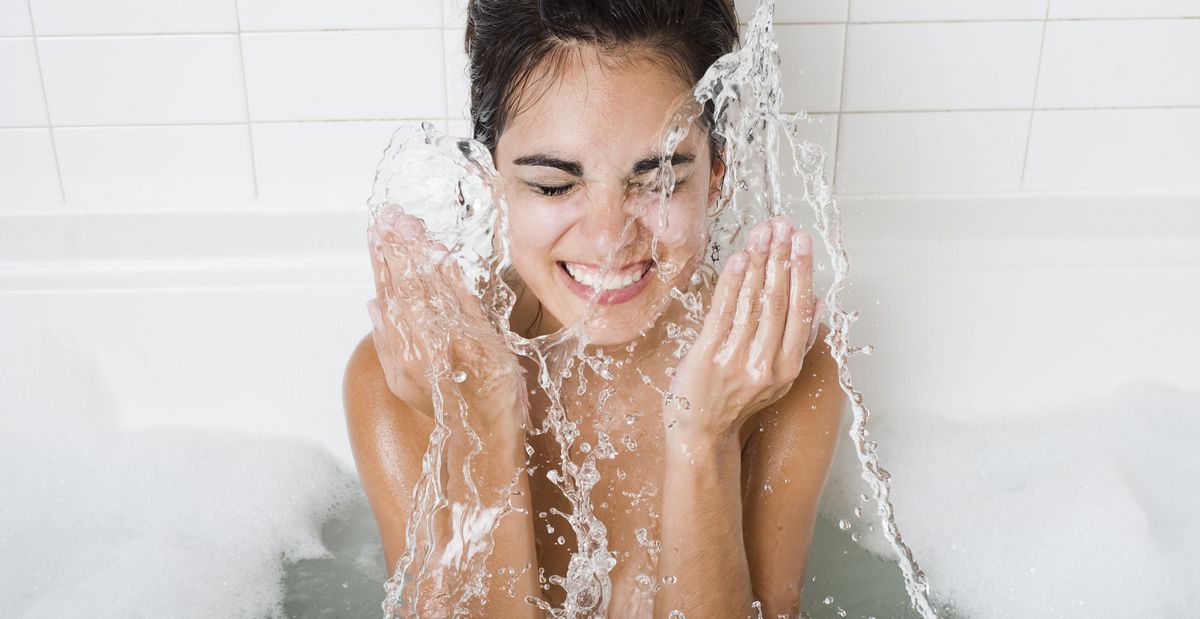
Acne skin care
Pharmacological treatment must always be complemented by appropriate skin care.
The basis of care is careful cleansing of the skin to remove impurities and excess sebum, while at the same time protecting the natural hydrolipidic mantle of the epidermis, which is a guarantee of good hydration.
It’s essential to use cosmetics containing gentle cleansing substances (alcohol-free), as well as salicylic acid or glycolic acid, as these “loosen” epidermal cells, helping to get rid of sebum.
Cleansing gels for acne-prone skin are often enriched with peeling particles, whose task is to facilitate the removal of dead epidermal cells and stimulate renewal, but they cannot be used at the time of exacerbation of changes and the appearance of purulent eruptions (so as not to spread the infection to other areas of the face). Peels for acne-prone skin can be performed a maximum of 1-2 times a week.
An important part of skincare is daily make-up removal, which can be carried out using a micellar liquid.
After contact with water, a non-alcoholic toner should be used to restore the skin’s pH balance, reinforcing its natural defense mechanisms.
Oily, acne-prone skin is often dehydrated, so it’s important to moisturize regularly.
Moisturizing creams are lightweight and quickly absorbed without leaving a greasy film.
Day creams have an additional mattifying effect (while regulating sebaceous gland activity), while night creams support the treatment of acne changes.
Also read about: Dandruff in the hair
They should contain substances with antibacterial and anti-inflammatory effects (e.g. benzoyl peroxide, azelaic acid, vitamin C, tea tree oil, zinc oxide) and mild exfoliants (e.g. salicylic, glycolic or almond acids). Acne masks can be applied once or twice a week.
It’s important for mature skin that the skincare methods used to treat acne also act on the aging of the skin.
By avoiding excessive sunbathing and applying sunscreens, we combat photoaging and the formation of discolorations.
With retinol-based preparations, we prevent disorders of epidermal keratinization, promote epidermal renewal, improve the substructure of connective tissue, and lighten discolorations and superficial wrinkles.
Vitamin C also has a simultaneous anti-inflammatory and rejuvenating effect.
Its presence in creams both combats free radicals and inhibits the production of post-inflammatory cytokines.
The same applies to chemical peels.
On the one hand, by exfoliating the upper layers of the epidermis, they constitute a form of acne therapy; on the other, they are used in all anti-aging treatments.
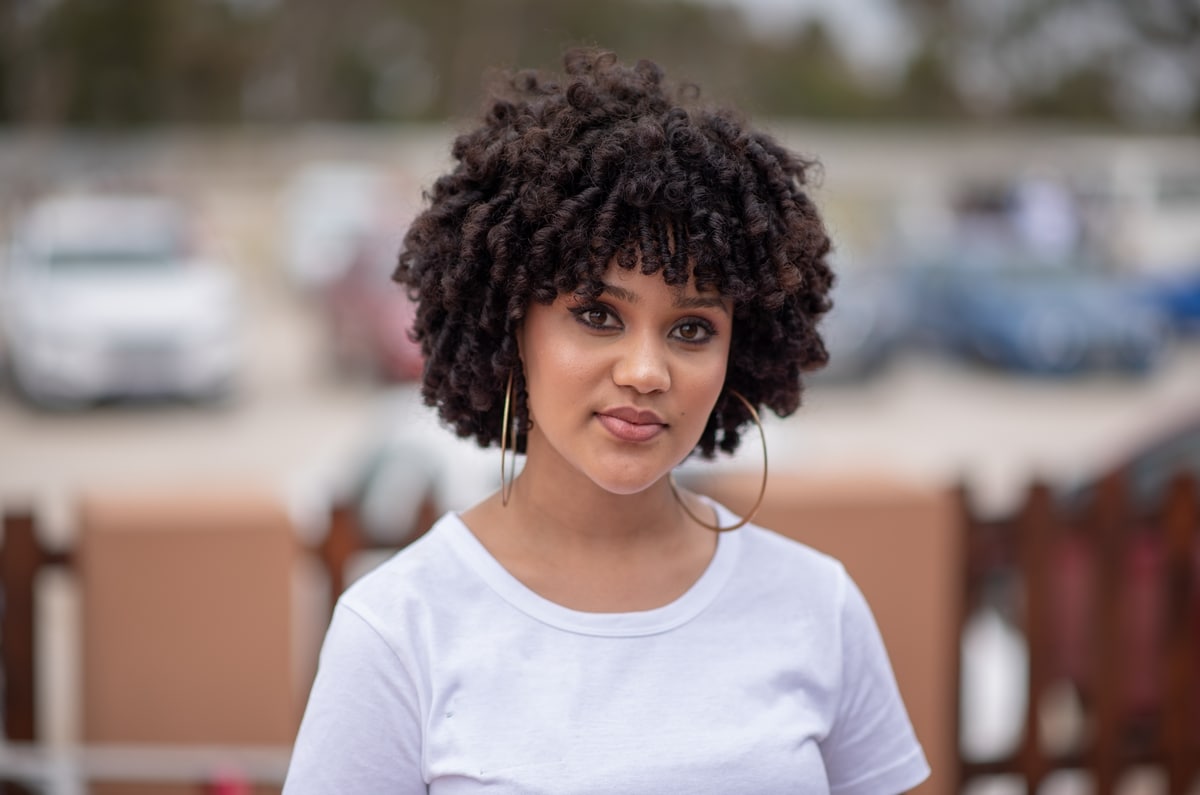
Acne diet
The acne diet must cover the needs of all nutrients, minerals and vitamins. At the same time, products that have been proven to have a negative effect on acne complexion must be eliminated.
An acne diet should include:
Vitamin C, which, as an antioxidant, protects against the negative effects of UV rays.
It also helps reduce skin discoloration, and influences skin firmness and elasticity.
Found in fruits and vegetables: peppers, Brussels sprouts, rosehips, blackcurrants and citrus fruits.
Vitamin A, which regulates sebum secretion and is responsible for skin hydration.
Like vitamin C, it protects against solar radiation.
Its sources are butter, liver and fish oils.
Vitamin D, which reduces sebum production.
Vitamin D is formed under the influence of sunlight, and small quantities are also found in vegetable oils and fish.
Vitamin PP, which reduces sebum secretion, has an exfoliating and anti-inflammatory effect.
There’s plenty of vitamin PP in yeast, wheat bran and meat.
Vitamin H, whose deficiency is associated with theonset of acne and seborrhea.
Sources of this vitamin include chicken eggs, nuts and liver.
Omega-3 and omega-6 fatty acids, good sources of which are sea fish, linseed, walnuts, olive oil and rapeseed oil.
These fatty acids reduce inflammation and allergies, and have the ability to suppress the immune response.
A lack of unsaturated fatty acids in the diet leads to disorders of epidermal keratinization and the formation of blackheads.
The following items should be excluded from your plan:
Products with a high glycemic index, which cause a sudden increase in insulin in the blood.
Decreased insulin sensitivity increases the production of androgens, a hormone responsible for increased seborrhea and the subsequent formation of blackheads.
Consequently, fast food, processed foods and sweets should be eliminated from your diet.
Milk and dairy products: research suggests that skimmed milk has a more negative effect on your skin than whole milk.
Dairy products can contain hormones such as progesterone, androstenedione and dehydroepiandrosterone sulfate.
Androgens can be responsible for oily skin and the colonization of Propionibacterium acnes bacteria.

Acne also affects adults
Acne isn’t just a teenage nightmare.
Problems with blackheads, pimples and oily skin are increasingly affecting people between the ages of 20 and 30.
In the past, acne was mainly associated with a hormonal storm in adolescence.
Today, it’s the bane of many thirty-somethings.
The causes?
Stress, air pollution, poor diet.
These are just some of the factors behind “prolonged” acne.
For people entering puberty, the hormonal storm is the culprit behind the appearance of acne lesions on the face, back or décolleté.
Not so long ago, it was thought that, in adults too, hormonal imbalance was one of the most important causes of skin imperfections.
Adult acne mainly affects women, while male adult acne is statistically less frequent. However, a recent study revealed that none of the women examined suffered from hormonal disorders.
That’s not to say that this cause should be ruled out in some people – the changes intensify regularly, for example around the time of menstruation.
However, this is not the main reason why more and more adults are unable to get rid of their acne.
Pay attention to any other alarming symptoms, such as sudden weight loss, hair lossThe cause could be a hormonal imbalance in the body.
Acne in adults is generally milder than in teenagers, but is often chronic and difficult to treat.
Don’t forget that the causes of pimples can be multiple.
Adequate sleep, relaxation, a healthy diet and a careful choice of cosmetics can all help to improve skin condition.
Leave therapies with more powerful drugs, such as antibiotics, as a last resort.
They often cause side effects, including dry skin.
“One of my biggest dreams is that my company will be able to change the course of one family’s life, one child at a time by giving back to the community.”

